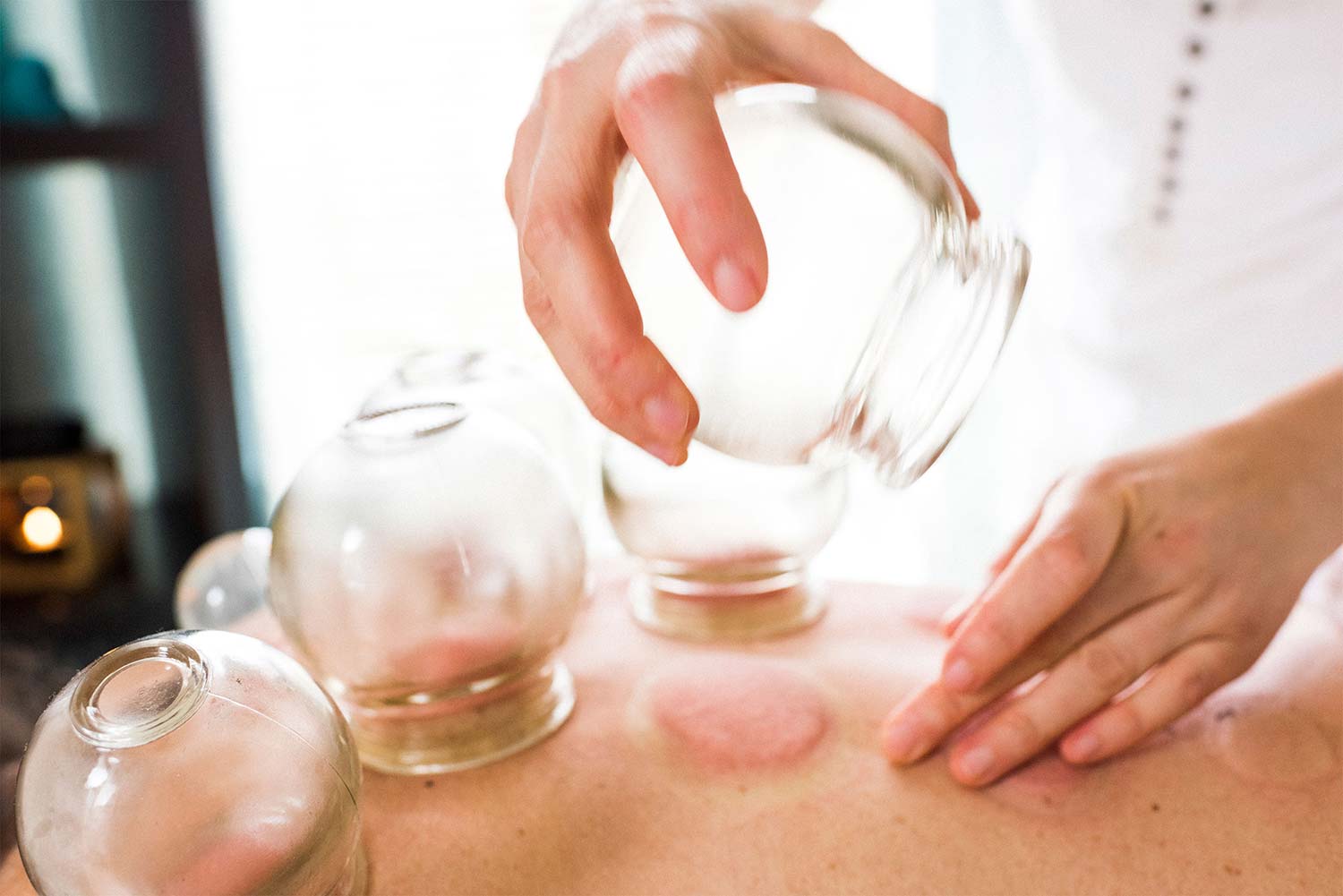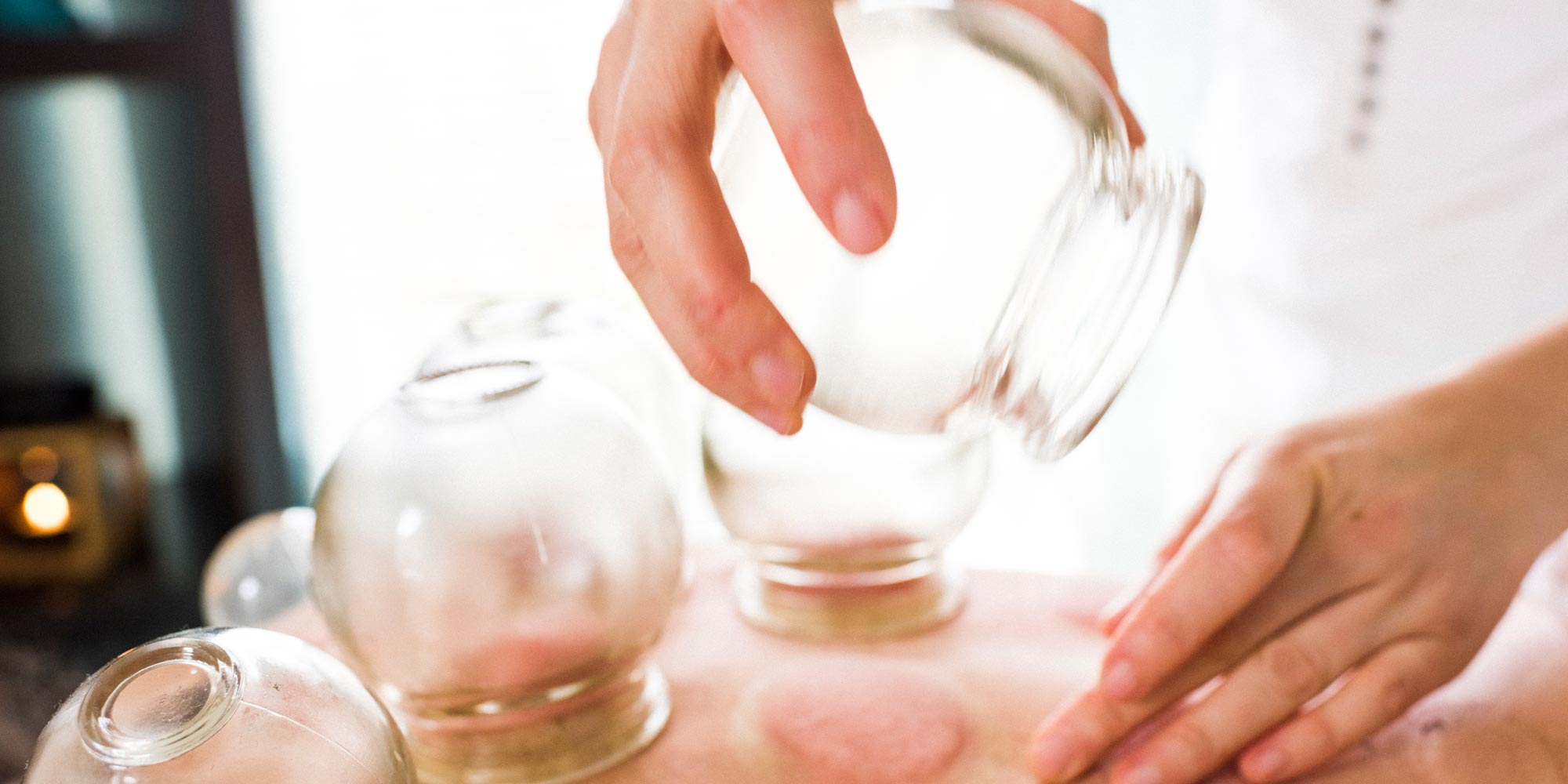
Cupping is an ancient aspect of Chinese Medicine that was recently made famous in the United States during the 2016 Olympics as many athletes utilized its healing benefits to recover from sports related ailments. With the help of heat, glass cups form a suction on the body’s tissues creating a therapy similar to massage. However, whereas massage commonly utilizes compression therapy, cupping does the opposite by pulling the body tissue rather than pressing it. In doing so stagnant devitalized blood and body fluid is moved allowing for new more nourishing blood and fluids to enter those spaces to rejuvenate and heal. It is an especially fantastic therapy for relieving muscle tension.
Cupping is a lesser-known treatment that is also part of Oriental medicine, one that can provide an especially pleasant experience. One of the earliest documentations of cupping can be found in the work titled A Handbook of Prescriptions for Emergencies, which was written by a Taoist herbalist by the name of Ge Hong and which dates all the way back to 300 AD. An even earlier Chinese documentation, three thousand years old, recommended cupping for the treatment of pulmonary tuberculosis. In both Eastern and Western cultures, cupping evolved from shamanistic practices that held the belief that illnesses and infirmities can be sucked out of the body
Cupping was established as an official therapeutic practice in the 1950s across hospitals in China after research conducted by Chinese and former Soviet Union acupuncturists confirmed cupping’s effectiveness. Prior to the 1950s, cupping had also been practiced as an auxiliary method in traditional Chinese surgery. In recent years cupping has been growing in popularity, with celebrities like Gwyneth Paltrow, Jennifer Aniston, David Arquette, and athlete Michael Phelps drawing public attention to the traditional Chinese therapy technique.
Cupping is the creation of suction on the skin using glass or plastic cups. This suction gently draws the tissues up, lifting and stretching the targeted muscle and fascia layers, allowing fresh lymph and blood to flow. Once cups are in place they can remain stationary or, as in the case of ‘sliding cupping,’ slowly glided over the area being treated. Much like a massage from the inside, cupping uses suction rather than pressure.
The reverse pressure that cupping provides not only allows for the free flow of Qi, blood, and lymph, but has a relaxing effect on the nervous system. Cupping is popular with athletes and active individuals because of its help with muscle recovery and soreness, but the benefits go far beyond that. Because of its promotion of healthy Qi and fluid flow in tissues, cupping can aid in the alleviation of so many more conditions than just musculo-skeletal pain, such as respiratory issues, digestive issues, common cold, inflammation, and headache, while increasing immunity and natural metabolic detoxification. Marks from cupping usually fade in 4-10 days, but the more stagnation there is the darker and more lingering the marks tend to be. The treatment area should covered and protected from cold and wind to prevent the elements from entering the muscle layer causing stiffness.
Conveniently located on 5th Avenue in New York City near Union Square Park and centrally located within blocks of Madison Square, Washington Square, Stuyvesant Square and Gramercy Park.
Sessions available by appointment only.


